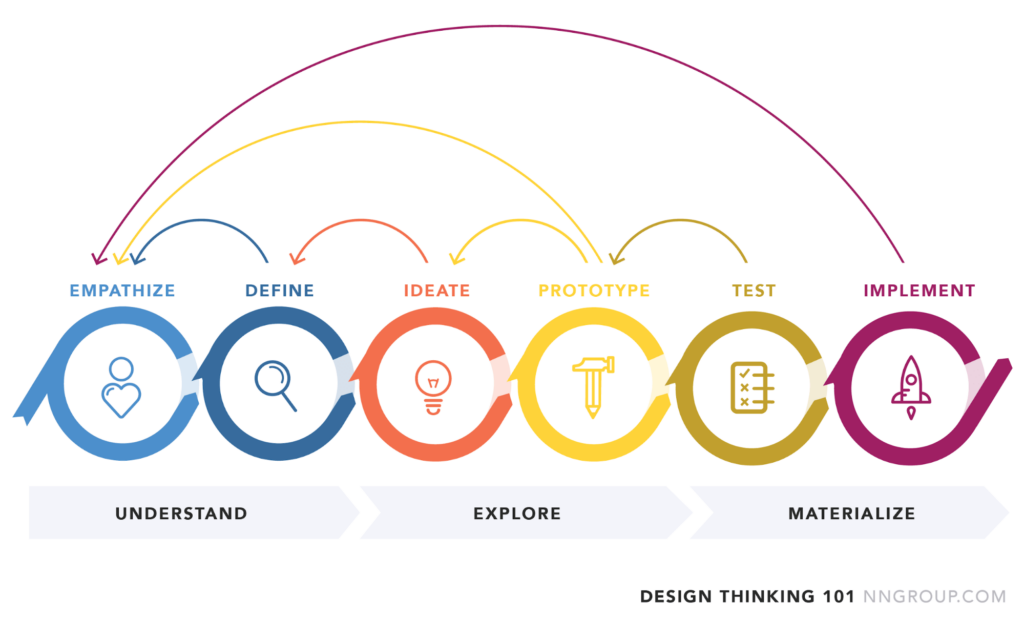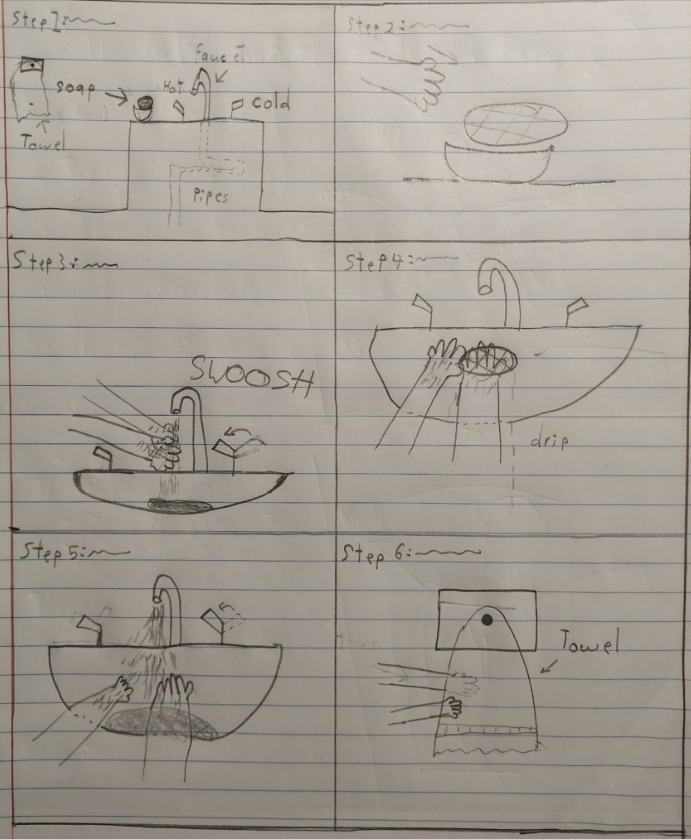Substantive Post (Challenge B #2)
What is the Design Process?
A design process is a series of general steps taken to create a final product. The design process is generally broken down into six main steps: Define (the problem), Ideate (come up with an idea), Prototype, Test, and Implement. These steps can be taken in sequence and iteratively, as seen in the diagram below. In the case of EDCI, my process for the comic assignment was to use the template graciously provided by the professor, and completing the phases one by one (sequential). After completing the prototype and receiving peer feedback, I went back and used the peer feedback to fix the mistakes they found in the blog post and comic (iterative). After I was confident of the changes I made, I submitted the assignment.

Room for Improvement
Although I have not received feedback as of the writing of this blog post, I have been working alongside my learning pod on Challenge B, and I have been learning quite a bit. My teammates focused on the visuals and text more than me, while I focused on the prototype more. And so, one method for improvement for the upcoming projects would be to delegate different sections to each member. This way, we can focus on all aspects of certain areas instead of only focusing on what we are good at – and neglecting other important aspects of the project. Below is my storyboard & script, and (work in-progress) video prototype for Challenge B. I decided to use Captions Lite instead of Canva to create my second prototype.
Challenge B Storyboard & Script
Title: Step-By-Step Handwashing Techniques – SCRIPT
- Step 1: go to the nearest sink (with soap and running water available)
- Step 2: grab the soap
- Step 3: turn the water on to wet your hands, then turn it off again
- Step 4: rub your hands together and around the soap, getting it everywhere
- Step 5: run water over your hand until there is no more soap
- Step 6: turn the water off and dry your hands with a nearby towel
Step-By-Step Handwashing Techniques – STORYBOARD

Hey! I really enjoyed reading your reflection on the design process because it was clear and structured, and even provided a picture that breaks down the stages from defining the problem to implementing the final product. I thought it was cool how you described moving from a sequential process to an interactive one by revisiting your prototype after peer feedback, showing a strong understanding of how design is about refining ideas rather than completing them in a single go.
Your reflection on teamwork was also thoughtful because you recognized that each member in your learning pod had both strengths and weaknesses, suggesting a better way to divide work for future projects (Challenge C). In the early stages, our team used divergent thinking by exploring different aspects like visuals and text for the prototype, and now you are aiming for a more convergent approach that brings those ideas together into a cohesive final product.
If you wanted to expand your post, you could connect your design choices to backward design by considering your target audience and how you planned each step to reach that goal. I think you also improved a lot from your last post by adding more multimedia, pictures, and content. I am also really happy to be in your learning pod because you, me, and Raj collaborated well and met all deadlines.